
The vibrant blooms and aromatic foliage of bee balm add a splash of color and scent across perennial gardens from early summer to fall. In addition, deer and rabbits won’t eat it, butterflies, hummingbirds and bees love its flowers, and this North American native can easily adapt to various soil and climate conditions.
GARDEN BUZZ
Unique whorls of shaggy headed flowers are typically 2 to 3 inches wide and bloom for up to 6 weeks. Blooms burst forth in a spectacular array of red, purple, pink or white. And the foliage blends the scents of mint and basil and is as functional as it is fragrant.
BEYOND BEAUTY
Bee balm is more than just visually enchanting: It also offers medicinal and edible beneFIts. Native Americans have long recognized its antiseptic properties, using it as a remedy for digestive issues, headaches and infections. The leaves can be used fresh or dried for teas and are believed to alleviate symptoms of colds, fevers and sore throats. Additionally, bee balm flowers are a bit spicy with a minty, oregano like flavor and add a subtle zest to salads, as a garnish or in baked goods.
On the next few pages, let’s explore the different bee balm cultivars, how to care for them and the secrets to cultivating a garden with its beauty and aromatic allure.
Meet the Family
Denne historien er fra Issue 175 - February 2024-utgaven av Garden Gate.
Start din 7-dagers gratis prøveperiode på Magzter GOLD for å få tilgang til tusenvis av utvalgte premiumhistorier og 9000+ magasiner og aviser.
Allerede abonnent ? Logg på
Denne historien er fra Issue 175 - February 2024-utgaven av Garden Gate.
Start din 7-dagers gratis prøveperiode på Magzter GOLD for å få tilgang til tusenvis av utvalgte premiumhistorier og 9000+ magasiner og aviser.
Allerede abonnent? Logg på
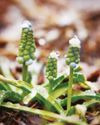
Backyard Tornado
\"HE WHO SEARCHES FOR SPRING WITH HIS KNEES IN THE MUD FINDS IT, IN ABUNDANCE.\" - ALDO LEOPOLD
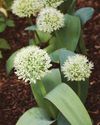
Front-of-the-Border "Wow!" Power
When it comes to easy-care plants that bring a lot of punch to the border, 'Ivory Queen' Turkestan onion should be near the top of your shopping list.

GARDEN ESSENTIALS
MAKE GARDENING EASIER THIS YEAR
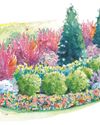
Elevate an Evergreen Hedge
Although an evergreen hedge looks suitable all year on its own, it's perfectly poised to become something even greater: a backdrop to a garden where flower after flower will unfurl with such drama, you just might find yourself stepping outside and offering your applause.

One Garden, Two Worlds
In this colorful and welcoming garden, sunny, flower-filled front borders transition to a shady backyard hideaway.

on edge
Four garden pros share their go-to edging techniques.
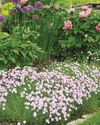
DIANTHUS
Add fragrance, vivid color and timeless charm with this reliable, cold-hardy perennial.

2025's Best New Plants!
Are you ready to start planning for next year's garden? A few new plants might be just what you need to bring those dreams to reality.
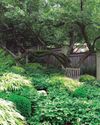
Solve Garden Problems With Ground Covers
Are you tired of coaxing turfgrass to grow in difficult spots? In her book Groundcover Revolution, Kathy Jentz says that ground covers can be the solution to these struggles.

The Romance of Spring
With the arrival of spring, emerging perennials fill the garden with soft texture, restoring life to the harsh, often barren landscape of winter.